In a remote rural area of the municipality of Rus (Jaen), nestled in an olive farm that extends over the current Giribaile reservoir, there is an exclusive Visigothic monument called the Cuevas de Valdecanales. His story is as follows:
At the beginning of the Middle Ages, the political situation of the Iberian Peninsula, with a deep-rooted Ibero-Roman society, was tremendously convulsive:the Germanic Suebi and Vandal peoples and the Caucasian Alans had invaded it and, both through foedus (treaties), as of conquests, they had seized most of its surface; thus, only the Tarraconense province remained in Roman hands. Faced with this situation -synthesizing a long and very complicated political-military process-, the Visigoth king of Tolosa, Theodoric II, in collusion with the Romans (even at their request), fought against the barbarian invaders with the theoretical aim of returning the Empire its territorial domain over Hispania.
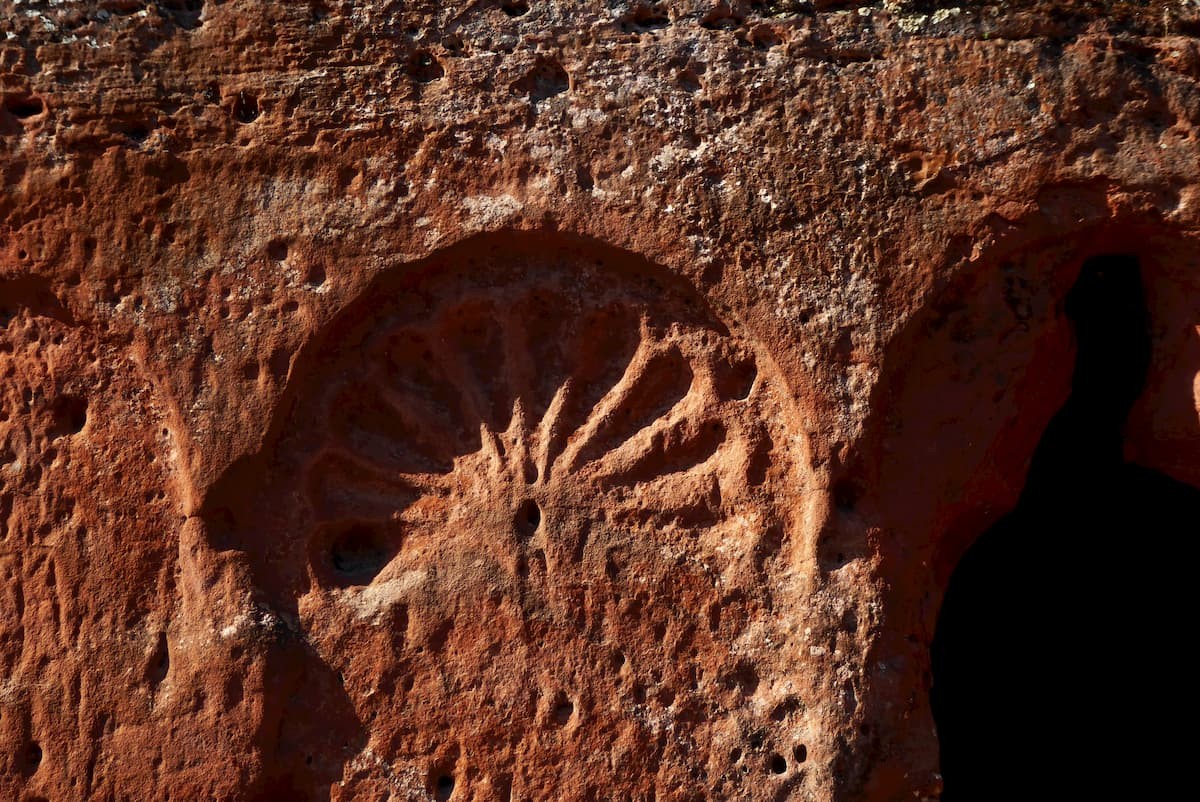
Theodoric achieved great victories from which the peninsular map was restructured. Basically, the Asdingo Vandals went to Africa and the Silingos were promptly annihilated by the Visigoths; the alanos had merged with the native population (according to Paulus Orosius in his Historiæ adversus paganos "they quickly changed the sword for the plow and became friends"); and the Suebian kingdom remained, very reduced, in the NW region (it ended up disappearing in 585 under the army of Leovigildo). Thus, most of Hispania came under the rule of the Visigoths, a people who no longer wanted to return power to its supposed rightful owner:the Western Roman Empire. In this way, a stage began that would last a little over two centuries (mid-V to early VIII) of Visigothic domination, abruptly interrupted by the arrival of the Muslims.
On the other hand, Justinian I, of the Eastern Roman Empire, was eager to reconquer the old territories, extending his circum-Mediterranean incursions to the SE of Spain. Almost everything that is now Andalusia was taken from the Visigoths, establishing a short-lived "Byzantine" stage (between the 6th and 7th centuries) and with little physical and institutional presence, which, however, fully affected Andalusia. what is now the province of Jaén, due to the Visigothic-Byzantine brawls in accordance with the demarcation of Orospeda. Virtually nothing is known about this period, since there are hardly any textual sources, although we can base ourselves globally on the Historia Gothorum of Isidore of Seville.
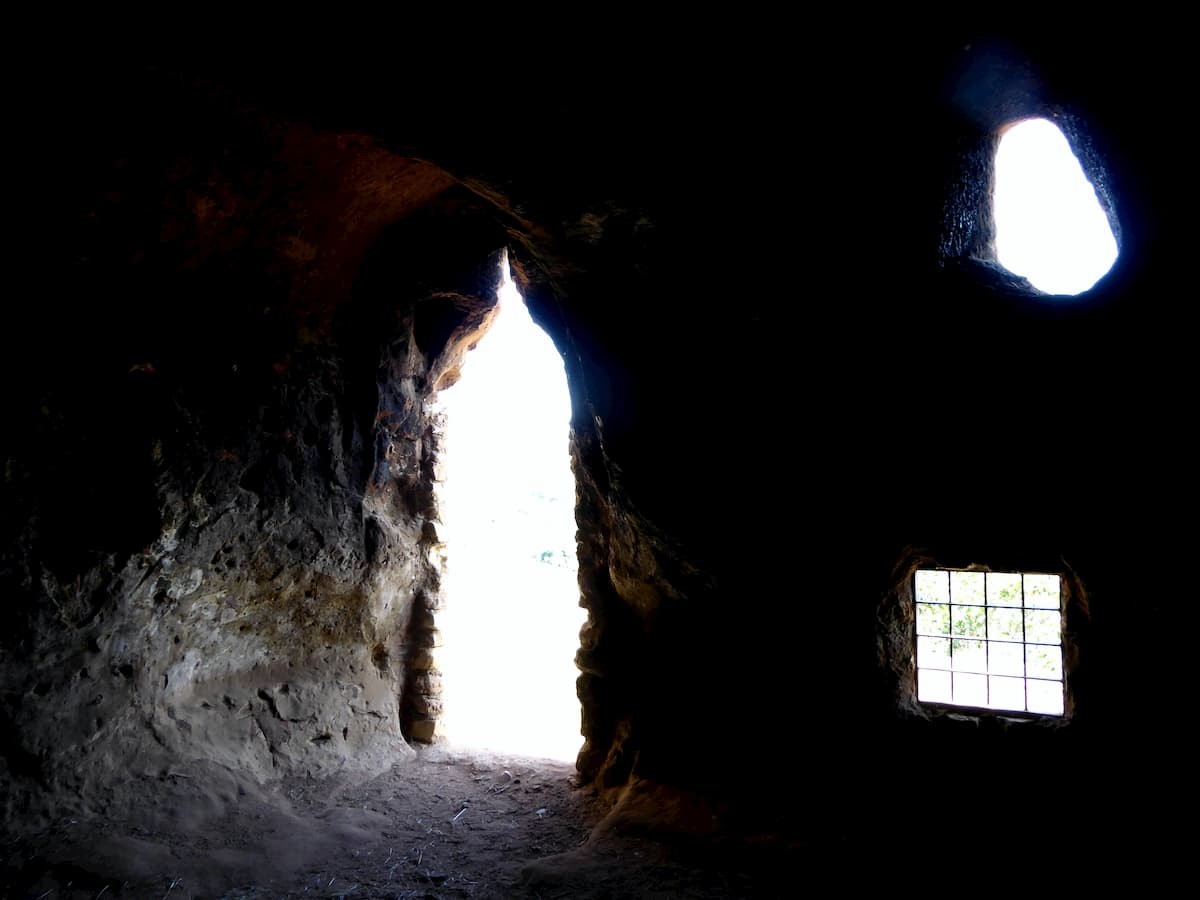
Around these same dates, the hermit phenomenon reached the West and achieved its greatest development. It was around the third century that a religious trend began in Egypt that advocated life alone and in extremely harsh conditions, in order to get closer to God. This trend initially spread through Syria, Anatolia, N of the Mediterranean... to reach the Iberian Peninsula, possibly at the end of the 4th century (it entered through the NE area and gradually expanded through the rest of its territory), although , from this time, we find little presence of its materialization, being from the sixth century when physical and documentary testimonies abound.
This complex spiritual movement manifested itself through many different names:anchorites (isolated life but with some human interrelation), ascetics (separated from society, seek spiritual purification by denying earthly pleasures -abstinence-), monachoi (solitaires), hermits (from eremus =desert; they live in total solitude; the extreme case are recluses, who live in walls), cenobites (withdrawn from the world, but forming a community), etc., without currently being able to define whether each one of them responded to an individualizable nature and it is now when we do not have enough knowledge to define the specificities of one or the other, or if it was also called indiscriminately at the time, within the common scope of contemplative life outside the world , whose particular connotations are, apparently, little differentiated. In this regard, according to the testimony of Isidore of Seville, in the seventh century there were only two types of monachoi :the cenobites and the hermits or anchorites.
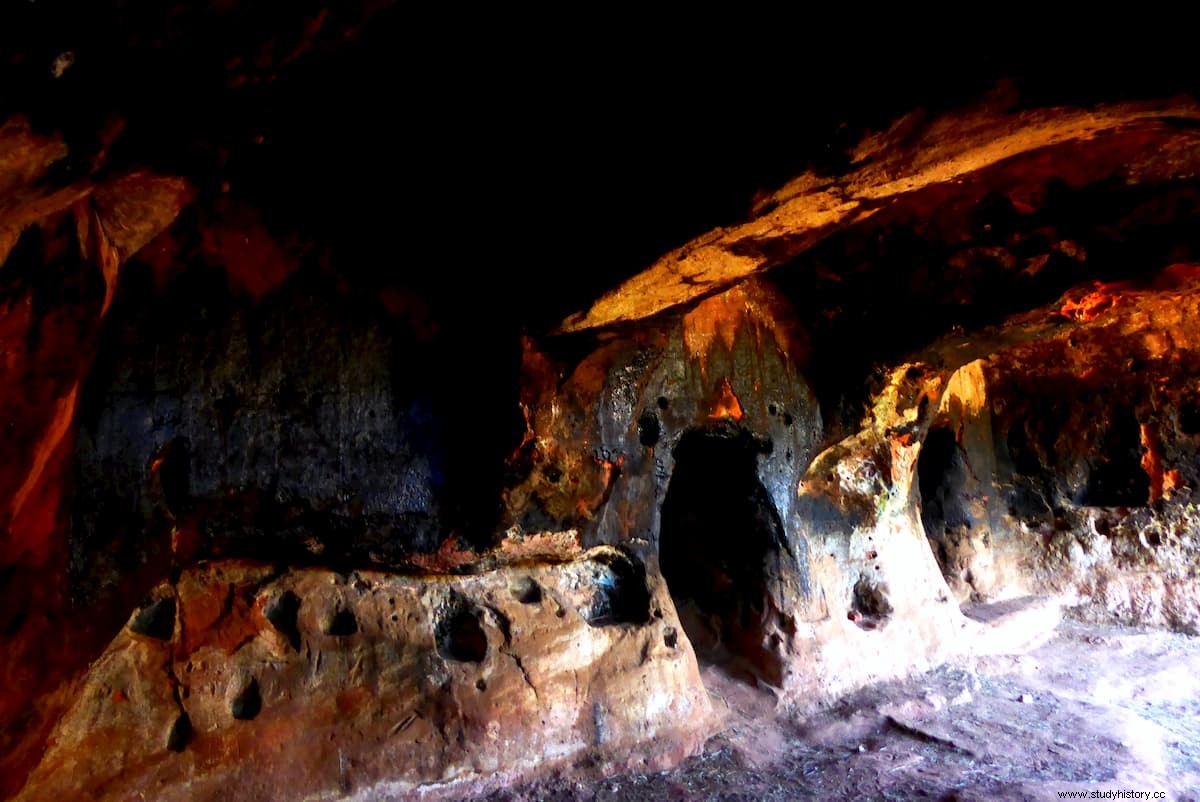
Likewise, the place where these monachoi settled , either individually or collectively, receives different denominations:monastery (from mono =one, originally the cell where a single person lived, although it soon came to have the current meaning), monastery and laura (collective centers, they could become authentic monasteries-villages or monastic towns), etc., depending on the way of life that was practiced there.
And it was towards the end of the sixth century, surrounded by such great political turmoil and no less religious tension, when the construction of the religious center of Valdecanales began.
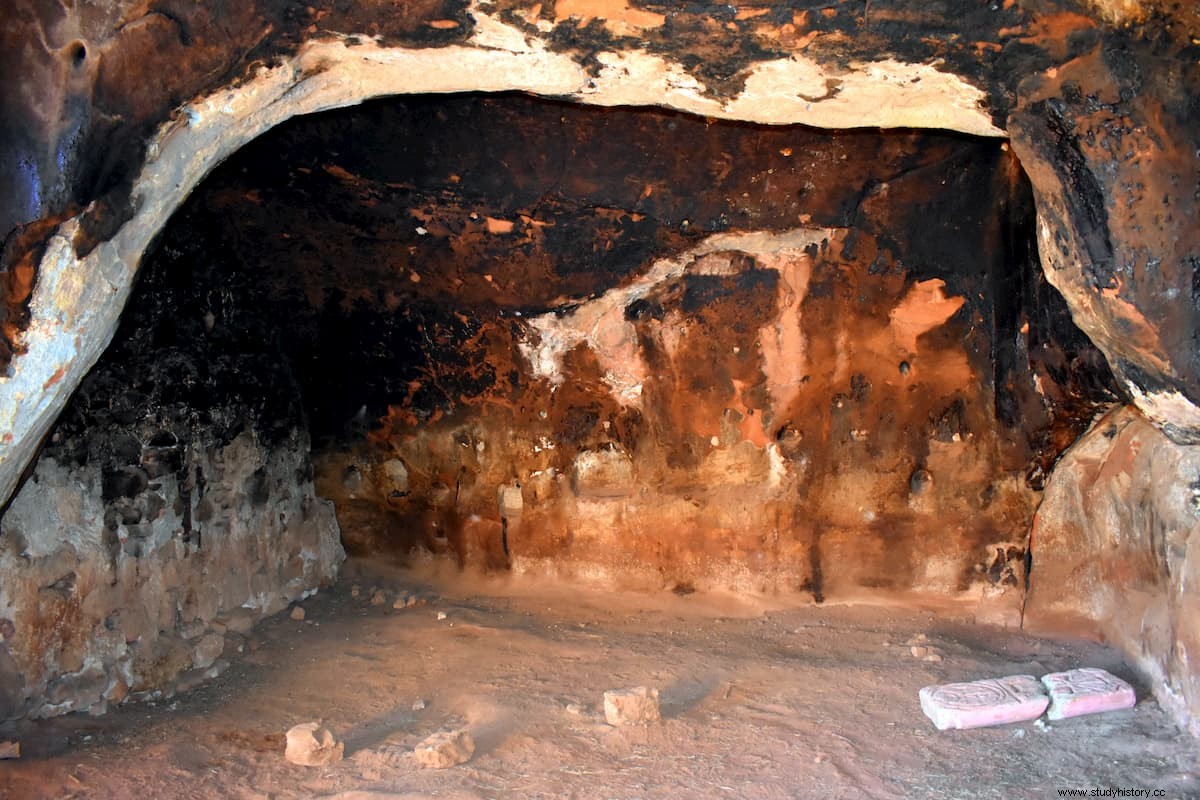
Excavated in a rocky outcrop of little hardness, this Visigothic hermitage meets the requirements for the existence of such types of facilities, in which its location in rural places, difficult to access and discreet and hidden enough, as to be able to stay away from the frequent revolts typical of times of change, such as the first centuries of Christianity or the subsequent process of Islamization. Additionally, the site is favored by having a very close source of drinking water and the Guadalimar River itself, which flows in the vicinity. In addition, the nearby Roman town of Torre del Obispo, as is known through archaeological investigations, maintained its agricultural exploitation in the Ibero-Roman style for several centuries beyond the fall of the Empire, which leads one to think that, for those wild places so little frequented, the political-religious swings were not too noticeable.
The first document that mentions the hermitage that we have evidence of, is from 1576, the date on which Philip II, based on a pontifical bull, alienated the hamlet called "El Mármol" to the bishopric of Jaén, writing for the inauguration an act that speaks of an old construction, without describing it in detail, nor is it given a date or functional link beyond the fact that "it seemed to be the old building of the Mill". However, already in a document dated 1675 referring to the payment of some works of "escaramujo" and cleaning of olives, the place is called "el ojo de las cuebas", in reference to the nearby spring (el ojo) and cuebas ( the construction itself). From this moment, according to Bartolomé Cartas, the news about Valdecanales is restricted to general mentions related to agricultural issues, so that the hermitage as such was not "discovered" in its historical-archaeological interest, until 1968, of the hand of Rafael Vañó, being declared a National Historical Monument in 1970. From that moment on, different entities and cultural administrations have become aware of its value, which has hardly alleviated the absolute lack of physical protection that it suffers, especially everything, in the external area, where dozens of names and dates appear engraved on the soft wall. However, there is a good understanding between the Rus city council and the property owner, on the basis of which the monument is kept clean and there is no access difficulty for its visit.
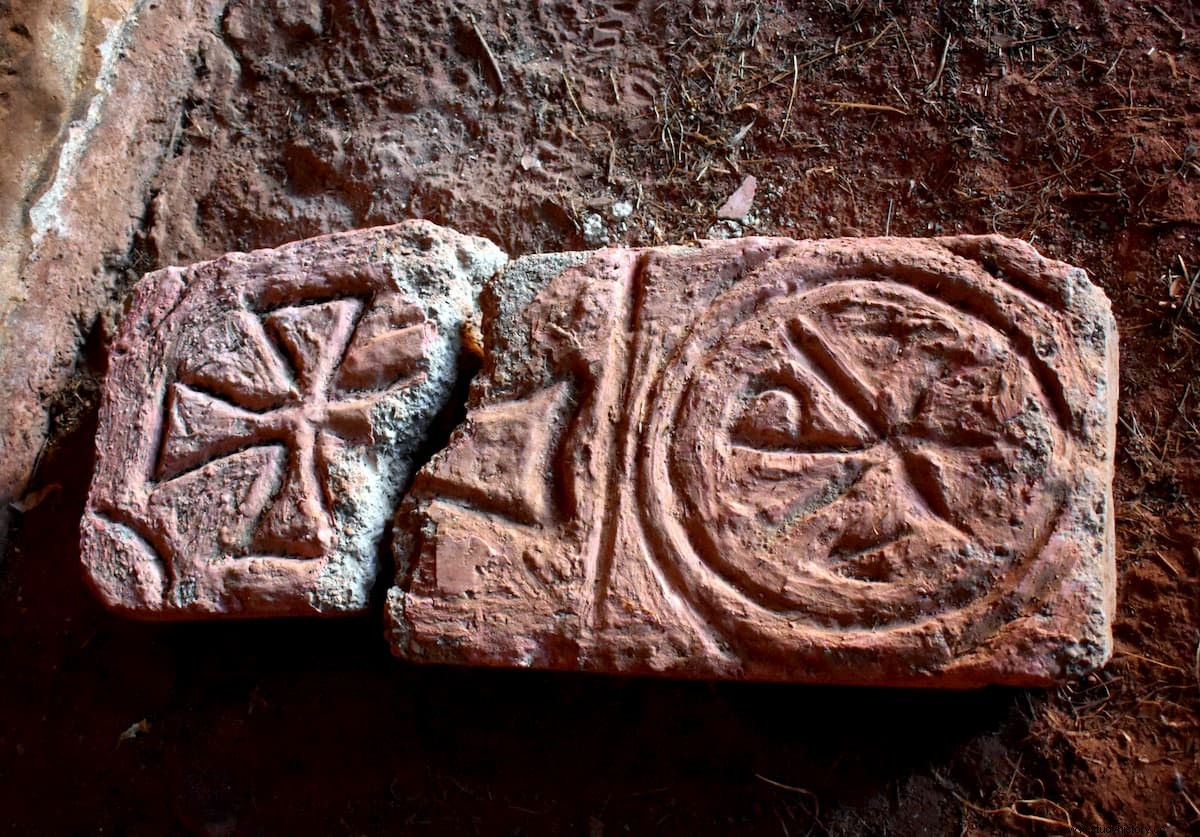
At this time, what can be seen from the hermitage enclave consists, roughly, of three areas excavated in the rocky cut and differentiated from each other, as well as another series of recesses and carvings in the matrix stone, which give the whole a certain appreciable urban planning, mainly , both in the access routes that, essentially, are two:the first, sinuous, surrounds the monastic space from one side; the second, frontal, overcomes the difference in height with some barely carved steps, as in the cutting and smoothing of certain rocks that flank, as an entrance, the ascent to what would be a small square, artificially leveled. In addition, throughout the surrounding space, there are also a series of holes of greater or lesser size, made expressly and that must have served the community to place various utensils and belongings.
From the artistic and architectural point of view, the external front of the main chamber or oratory should be highlighted, which is more than 17 m long and an average of 5 m high, where, although very damaged by the erosion of the crumbly stone , you can still see blind arches decorated alternately with scallop shells, interspersed with others in which small openings with a tending to oval shape open; likewise, two doors open, one of which is larger, circular and is walled with masonry (it must be much later) and the other is rectangular, ending in a semicircular arch (it appears very damaged, but old photographs can know its authentic morphology), being able to intuit the existence of capitals on small pilasters as jambs. All this is frankly deteriorated so it is difficult to appreciate the details, especially decorative. This more ornate area must have been protected from the sun and rain by a small roof or some other type of attached structure that led to the insertion of small beams in the wall, since holes similar to small holes can be seen on the carved band.
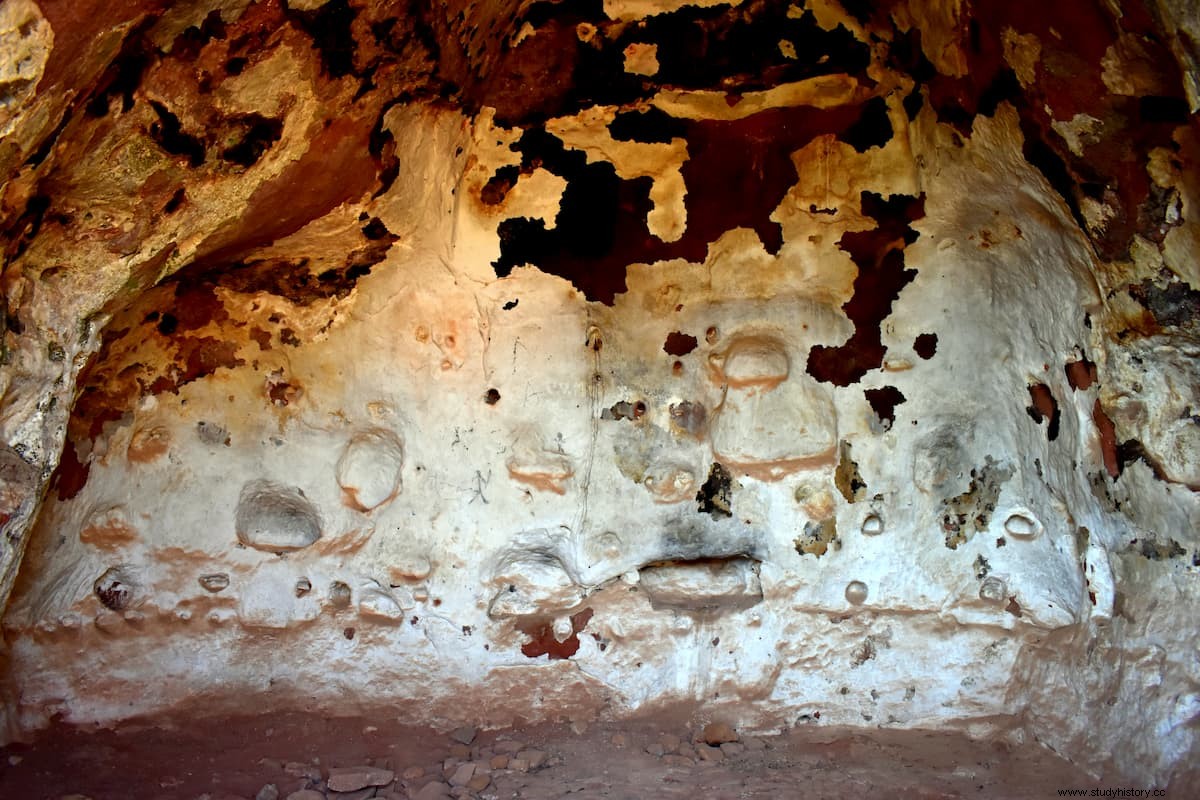
Inside, this more or less rectangular and expeditious area (although different spaces that would determine three naves are marked, thanks to rough segmental arches), has two small "windows", one in height and another, quadrangular (due to its invoice, it seems later) at ground level, which allow the entry of light and ventilation; the “ceiling” is assimilable to a barrel vault; and in the front it has a cupular apse, at a higher height, whose difference in height is saved by a series of narrow steps. It seems that there are appreciable blind arches and parietal decoration, but due to poor lighting and degradation due to both human causes (especially soot from making fires inside) and natural causes (concretions due to seepage and detachment of the supporting rock), hardly they can be intuited.
The "cave" that served as a baptistery, which is climbed by a staircase carved into the natural wall, is located, somewhat distantly, to the left of the oratory, and is smaller in size. With a quadrangular plan, a more or less domed ceiling, it has a larger niche to the right and other smaller holes, as well as a small pedestal; it is, today, paved with small boulders and whitewashed up to half its height. Outside, the wall is carved, leaving large projections that would be used as benches.
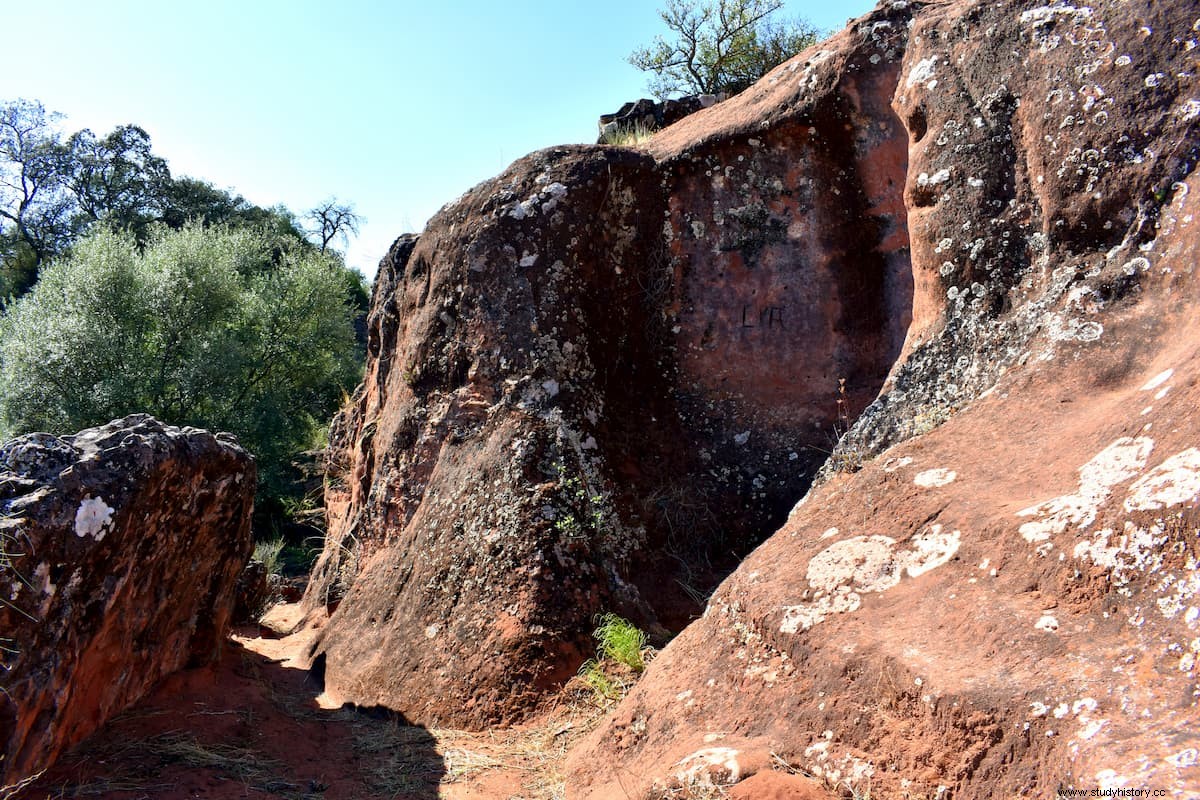
The refectory is located to the right of the oratory and, as in the case of the baptistery, somewhat removed from it. It is somewhat amorphous, and the vault that must have initially covered it is barely visible; It has cupboards and small holes on the sides of a functional nature (to place images, lamps or candles to illuminate...) without any observable decoration.
It should also be mentioned that inside the oratory there is preserved, on the ground, a stele or tombstone fractured in two but complete, which has a carved labarum in the upper half and a cross (with a design similar to that of the Hospitaller or Teutonic orders). ), at the bottom and whose chronological assignment is unclear but, of course, modern.
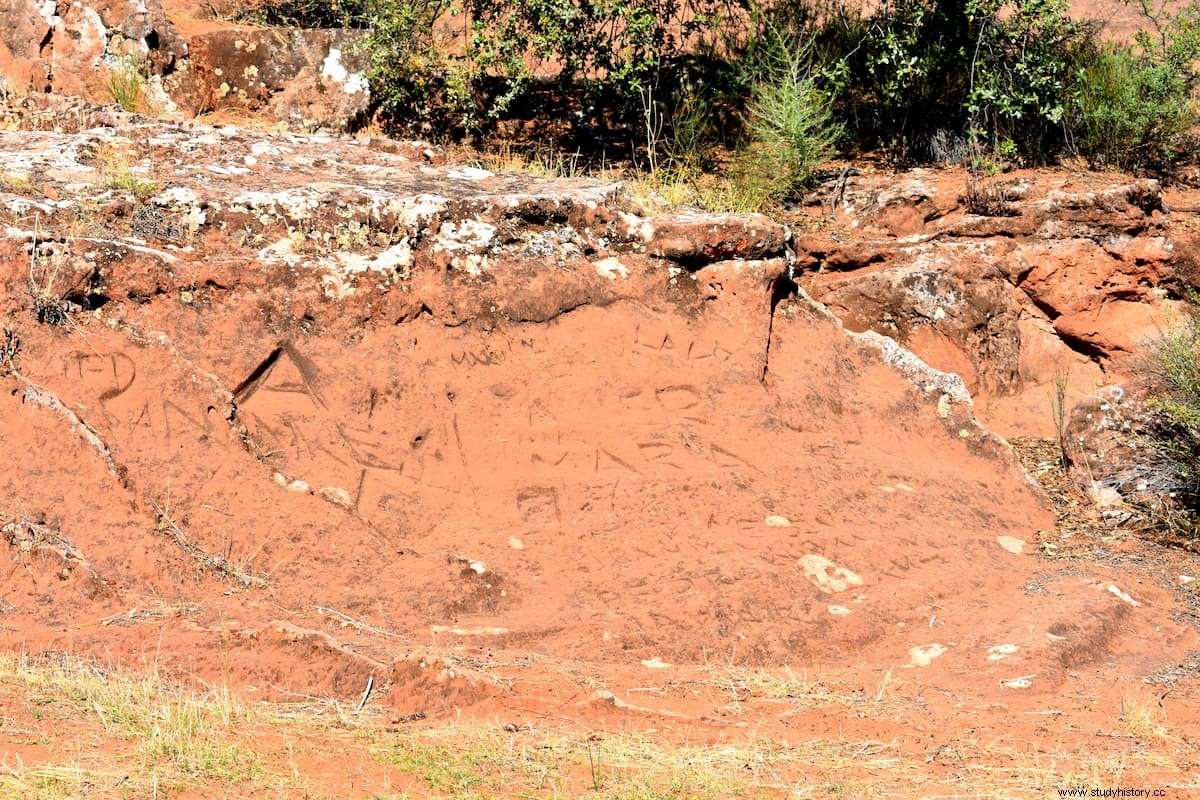
It is possible that the hermitage had two differentiated phases of use:the first, Visigothic, to which the bulk of the complex corresponds; the second would have left its mark on some decorations and, perhaps, on small structural alterations, corresponding to Mozarabic moments, a stage in which, especially in eastern Andalusia, numerous buildings with similar connotations were built.
Finally, it should be noted that it is the only hermitage in Andalusia of this hypogeal typology, which is one of the oldest in Spain, since its first phase dates from the 6th and 7th centuries and is of tremendous interest. historical, archaeological and religious, which also harmonizes with the landscape of great beauty in which it is inserted.
This article is a collaboration of Esther Núñez Pariente de León, archaeologist and art historian.
